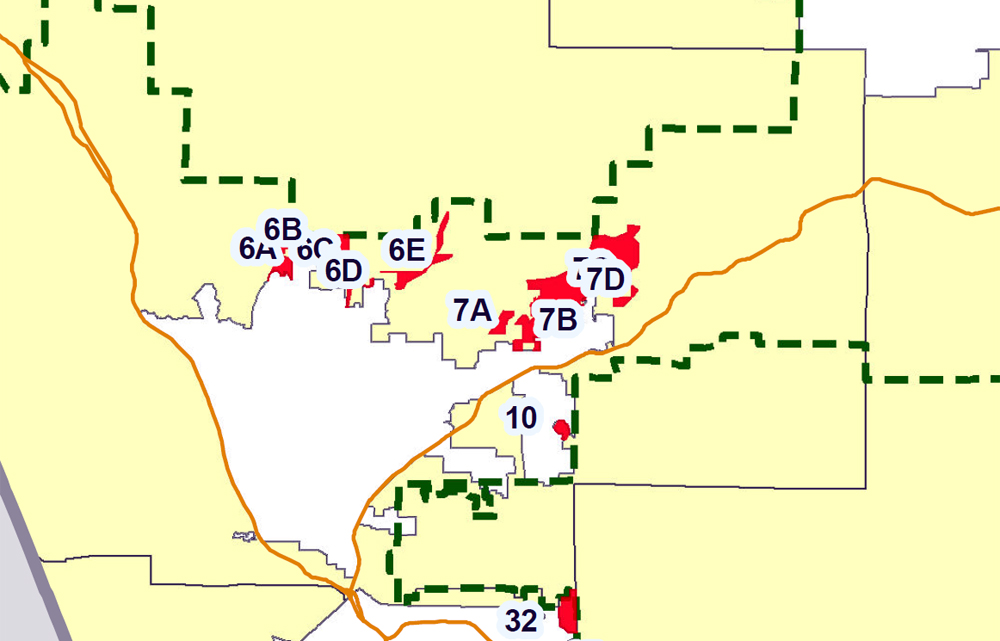Unincorporated Santa Clarita Valley residents living within the Castaic, San Francisquito Canyon and other community standards districts are in for some subtle changes – at least after the sun goes down.
On Tuesday the Los Angeles County Board of Supervisors will consider a plan that would establish a rural outdoor lighting overlay zone – i.e., control light pollution – throughout the unincorporated Santa Clarita and Antelope valleys and the Santa Monica Mountains.
Supervisors Michael D. Antonovich and Zev Yaroslavsky called for the plan in December 2010, noting that inconsistencies have developed over the years in regulating light pollution in the different unincorporated areas.
Eight community standards districts have regulations for outdoor lighting – Castaic, San Franciscquito Canyon, Leona Valley, Acton, Santa Monica Mountains North Area, Juniper Hills, Southeast Antelope Valley, Elizabeth Lake and Lake Hughes – to control glare from street lights and private property owners’ floodlights. Other unincorporated areas are unregulated.
The new lighting plan would remove the regulations from the community standards district documents and put all affected areas under the new ordinance, which the Regional Planning Commission approved Nov. 9.
“Residents of the county’s unincorporated rural areas … value dark night skies that are unimpeded by light pollution,” Antonovich and Yaroslavsky said in their 2010 motion. “Dark night skies are one of the many qualities that set rural areas apart from urban and suburban communities.”
 The piecemeal approach to curbing light pollution through a patchwork of regulations via community standards districts “has been problematic for rural areas that are not currently in a CSD, as there are no standards to preserve and enhance dark night skies in those areas.”
The piecemeal approach to curbing light pollution through a patchwork of regulations via community standards districts “has been problematic for rural areas that are not currently in a CSD, as there are no standards to preserve and enhance dark night skies in those areas.”
Their request for a “baseline set of objective, measurable standards” resulted in a plan that tiers off of the state’s definitions of lighting zones. Zone 1 is dark illumination, for state parks and wildlife preserves; Zone 2, low illumination for rural areas as defined by the 2000 Census; Zone 3, medium illumination for urban areas; and Zone 4, high illumination areas.
The new county ordinance would align with state definitions using the 2000 Census. As a result, 40 specific areas on the urban fringe that are currently considered “urban” (Zone 3) – locally, the mouths of San Francisquito, Bouquet and Mint canyons, and a small part of Sand Canyon – would be reclassified as rural (Zone 2) for the purpose of outdoor lighting (see map above).
See below for rural outdoor lighting guidelines from the Los Angeles County Department of Regional Planning (October 2011).


Like this:
Like Loading...
Related





 Tweet This
Tweet This Facebook
Facebook Digg This
Digg This Bookmark
Bookmark Stumble
Stumble RSS
RSS































REAL NAMES ONLY: All posters must use their real individual or business name. This applies equally to Twitter account holders who use a nickname.
1 Comment
Hello
I have just finished reading the article on the Dark Skies issue and I will have to say that I was preparing to be impressed with Supervisors Antonovich and Yaroslavsky and thier efforts to keep the night skies dark in Rural areas as they should be!
However in my opinion i believe that the yard lights and porch lights are not the problem at least not for long anyway. What I am refer to is the barrage of lights that the solar and wind farms that are being shoved down our throats bring to the night sky.
Correct me if I`m wrong but I don`t remember reading anything in the article about those eyesoars, that is where the real problem is going to be how about addressing that issue? Because if you don`t I`m thinking that all your efforts will have been in vain would they not?
Because if what I`m being told is true and ninety eight percent of the vacant land between AveA and HWY 138 going north to south and from 140th west to 300th west will be taken up by Solar (AND) all the infustructior that it takes to support them (SWITCHING STATIONS ETC.) the flood lights porch lights etc. that are mentioned in the article will be a mere flicker even to the closest neighbor.
I beg the question is the sacrifice worth the reward? I think not!
So if I may offer a word of advise to maximize your efforts which I truely believe are in the wright direction by the way and you truely want to do some good for our night skies, well it`s kinda like this , if you want to hit a moving target don`t aim where it`s at aim towards where it`s going to be and these Solar plants are where it`s going to be thats your target not the porch lights ladies and gentlemen. the jobs and power they create aren`t enough to have an impact in the long run anyway not compared to the impact on the night skies,neighbors, wildlife etc.
We can come up with other means of power hell we already have thats more effiecent and has a smaller footprint by a long shot! but we have no way , at least not to date to repair THE NIGHT SKY!
Thanks for your time
Steve Smith
Quartz Hill Ca.